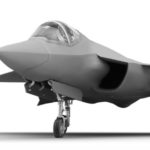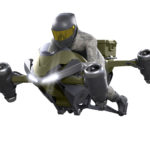Pipistrel has selected Honeywell’s small UAV Satcom system for its unmanned aircraft platforms.
The compact satellite communications technology is being used in three of Pipistrel’s new aircraft, including the fixed-wing Surveyor and both unmanned Nuuva platforms, the V300 and smaller V20.
Honeywell’s Small UAV SATCOM system weights just 1kg (2.2lbs) and is 90 per cent lighter than the company’s next smallest connectivity system, but brings the same capabilities enjoyed by larger aircraft to the Nuuva V300, V20 and Surveyor. The implementation will mark the first time Honeywell’s offering has been used specifically for an unmanned cargo or optionally manned aerial vehicle.
Unlocking BVLOS connectivity
Pipistrel CEO Ivo Boscarol said: “We are excited to offer our customers a global communication solution, which is location independent and cost-effective. The addition of Honeywell’s Small UAV Satcom to our unmanned aircraft platforms unlocks global beyond-visual-line-of-sight (BVLOS) connectivity for command-control, as well as mission-specific data relay. Our customers will enjoy the ability to connect to their assets anytime, anywhere, without the need to set up elaborate ground-based BVLOS infrastructure.”
Satellite communications, or Satcom, refers to a broad category of key technologies which connect aircraft to each other and to operators or air traffic control on the ground via satellites. Traditionally, satellite communications terminals have only been available to install on larger business and commercial transport aircraft due to their large size, weight and the power required. Honeywell’s Small UAV Satcom system is 30 per cent lighter than competing options, is customisable, and can be installed in different locations on an aircraft to accommodate a wide range of platforms.
“Game-changer” for small to medium UAVs
“Honeywell’s small UAV Satcom system is a game-changer for small or medium-sized unmanned aircraft, such as the Nuuva cargo or Surveyor aircraft, that previously couldn’t be equipped with satellite communications,” said Stéphane Fymat, vice president and general manager, Unmanned Aerial Systems and Urban Air Mobility at Honeywell Aerospace. “Now, they have access to everything we’ve come to expect from the large-aircraft experience, like global connectivity or fleet monitoring — but it’s been packaged in a size that is conducive to a much smaller aerial vehicle.”
The system provides unmanned aerial vehicles with global coverage and real-time video streaming to the ground. It also enables beyond-line-of-sight capabilities, so vehicles can be operated remotely beyond the operator’s visual sight. It can be used for a variety of applications, including logistics and delivery services performed by UAVs. The Small UAV Satcom can keep vehicles connected even in remote areas or over water where other ground-based communications systems, such as 4G, are not available.
Pipistrel’s Nuuva V300 is a long-range, large-capacity, autonomous UAV. It will take off and land vertically with battery power, meaning it does not require a runway, and has significantly lower operating costs than helicopters. It can carry loads up to 460 kilograms (approx 1010 pounds) for more than 300 kilometres, making it a solution for deliveries to areas traditionally accessible only by helicopter. Its smaller sibling, the Nuuva V20, shares the same architecture of the larger V300, but is designed to serve as a lighter cargo transport vehicle carrying loads of up to 20 kg.
The Surveyor aircraft uses a fixed-wing design designed to be customised with various sensors and cameras for use in applications like wildlife management, coastal patrol, traffic observation, or search and rescue efforts.

